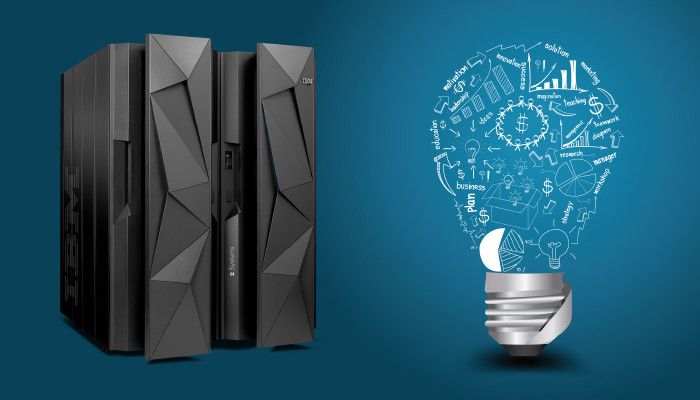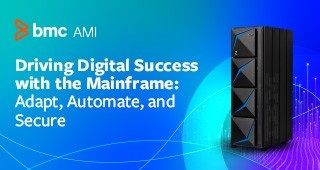While for many years technology pundits have predicted that mainframes will become antiquated and obsolete, they continue to be a central part of many businesses’ IT infrastructure. Mainframes’ speed, power, and security continue to make them essential for a number of industries, particularly those that are data-centered.
Despite often being thought of as old tech, mainframes have evolved and continue to be a key component of the ever-changing IT landscape. Plus, mainframes’ modernization has increased their capabilities while also making them more accessible to IT professionals. The result is that mainframes are still in high demand, and mainframe markets are likely to grow over the course of the next few years.
Current Mainframe Usage
The best way to appreciate the current role of mainframes is to look at some of the usage data. A Skillsoft Report from the last quarter of 2019 provided some compelling evidence showing that mainframes are widely used across industries and organizations. Specifically, the data showed that, as of the last quarter of 2019, mainframes were a central part of IT systems for:
- 92 of the world’s top 100 banks
- 10 out of 10 of the world’s top insurers
- 18 of the top 25 retailers
- 70% of Fortune 500 Companies
Mainframe usage is particularly high for industries that more heavily rely on data and that need to ensure that data remains secure. Specifically, healthcare, finance, utilities, and government organizations continue to rely heavily on mainframe systems. Notably, mainframes run 90% of all credit card transactions, and it’s estimated that mainframes currently handle a staggering 30 billion business transactions every day.
In 2018, a survey of enterprise mainframe users found that these organizations anticipated that their mainframe usage would only increase in the coming years. The current data supports that prediction and in part is driven by the modernization of mainframes.
Key Ways Mainframe has Stayed Relevant
One reason that mainframes continue to be relevant in the ever-changing world of IT is that mainframe companies have found ways to modernize systems while also ensuring that they continue to offer the key benefits that they’ve always had. Mainframes have long been known for speed, security, and power, and that hasn’t changed. Mainframes’ ability to do high-speed transaction processing continues to be unparalleled, as there is nothing that can match it in terms of speed, volume, or cost-effectiveness. As a result, it continues to dominate for things like credit card and ATM transactions, processing customer statements, and completing internal financial reports.
In addition, mainframes are so heavily relied upon because of the sheer volume of data that they can effortlessly handle. Mainframes can deal with multiple terabytes of data without issue or without interfering with overall performance. For data-centric industries like banking, government, healthcare, insurance, utilities, and education, this is crucial and is a key benefit for utilizing mainframes.
That said, one of the reasons the mainframe markets continue to grow is because mainframe engineers have found ways to modernize them while still maintaining the trademark benefits. The release of the IBMz15 offers evidence of this, as its release in September of 2019 leads to a 61% increase in mainframe revenue for IBM. By finding ways to adapt and evolve these systems, mainframe companies have helped to ensure that Big Iron continues to be used and grows in market share.
One key shift in this evolution is that mainframes no longer require proprietary operating systems nor are they COBOL-only. These requirements made them difficult to work with, and many IT organizations struggled to find professionals with the expertise to work on these older systems. As you can imagine, this is a problem that continued to escalate, as many mainframe engineers retired and new hires had less experience and training with these systems.
However, modern systems now can use popular operating systems and a variety of programming languages, including Python, Java, JavaScript, and C++. The result is that they are easier for IT teams to use, maintain, and integrate with other infrastructure. Additionally, the modernization of mainframes has allowed them to use some of the industry’s most sophisticated tools, including Scala, Python, TensorFlow, and Apache Spark ML.
Not only do these advances make mainframes a better fit for today’s IT professionals, but they also expand the capabilities of mainframes. A few of the advantages that come from using these advanced tools include:
- The ability to do sophisticated analytics without having to off-load mainframe data;
- Allowing mainframes to become blockchain hosts, offering many advantages over x86 servers, including faster response time, scalability, and 100% end-to-end encryption;
- Increased usage by DevOps teams; and
- The ability to run multiple virtual operating systems.
Predictions for What’s to Come for Mainframe Usage
While mainframe usage continues to be prevalent, Research and Market data predicts that by 2025, the global mainframe market will increase by $2.9 billion. This is a substantial increase and is particularly noteworthy given that many consider mainframes to be old tech. While it’s hard to predict what will be next in the ever-developing and rapidly-changing IT world, there are some mainframe predictions from industry experts that are worth exploring.
The first, consistent with current data, is that mainframes will continue to be an indispensable part of the IT landscape. As things stand, experts do not anticipate a diminish in the wide usage of mainframes.
Second, experts anticipate that mainframes will play an increasingly important role in data security. Many businesses struggle to maintain adequate levels of data security, as evidenced by the regularity of data breaches as well as the fact that many organizations fail to meet applicable regulatory requirements for data security. Mainframe systems are uniquely equipped to address security issues and are able to provide end-to-end data protection. The IBMz15, for example, offers encryption capabilities that can effectively protect data anywhere in the system without impacting performance.
Third, industry leaders anticipate that mainframe-based machine learning will increase. This makes sense because as mainframe systems are able to run more sophisticated tools, they are better positioned to utilize machine learning.
Fourth, there will be a continued rise in open-source platforms and tools that will improve performance while also making mainframes more accessible and cost-effective. As discussed, an ongoing issue with mainframe usage has been the reality that there are fewer and fewer IT professionals in the workforce with mainframe expertise. However, the rise in open-source platforms and tools enables development and operations professionals to work effectively with mainframes. Linux, Zowe, Python, Java, and Git make this shift possible. Particularly popular is Zowe, which offers a bridge between mainframe and open-source, enabling IT professionals to use open-source tools to access and control mainframes. This modernization of mainframe platforms and tools is likely to continue, in part driven by the work of the Open Mainframe Project, and will continue to make mainframe more accessible for IT professionals and more widely used in DevOps environments.
The current state of mainframe makes it clear that Big Iron is not going anywhere anytime soon. Instead, it’s likely that organizations will take advantage of the modernization of mainframes to make their systems more advanced, easier to maintain, more secure, and more cost-effective. All of this will mean growth in mainframe markets and continued reliability on mainframe systems.




